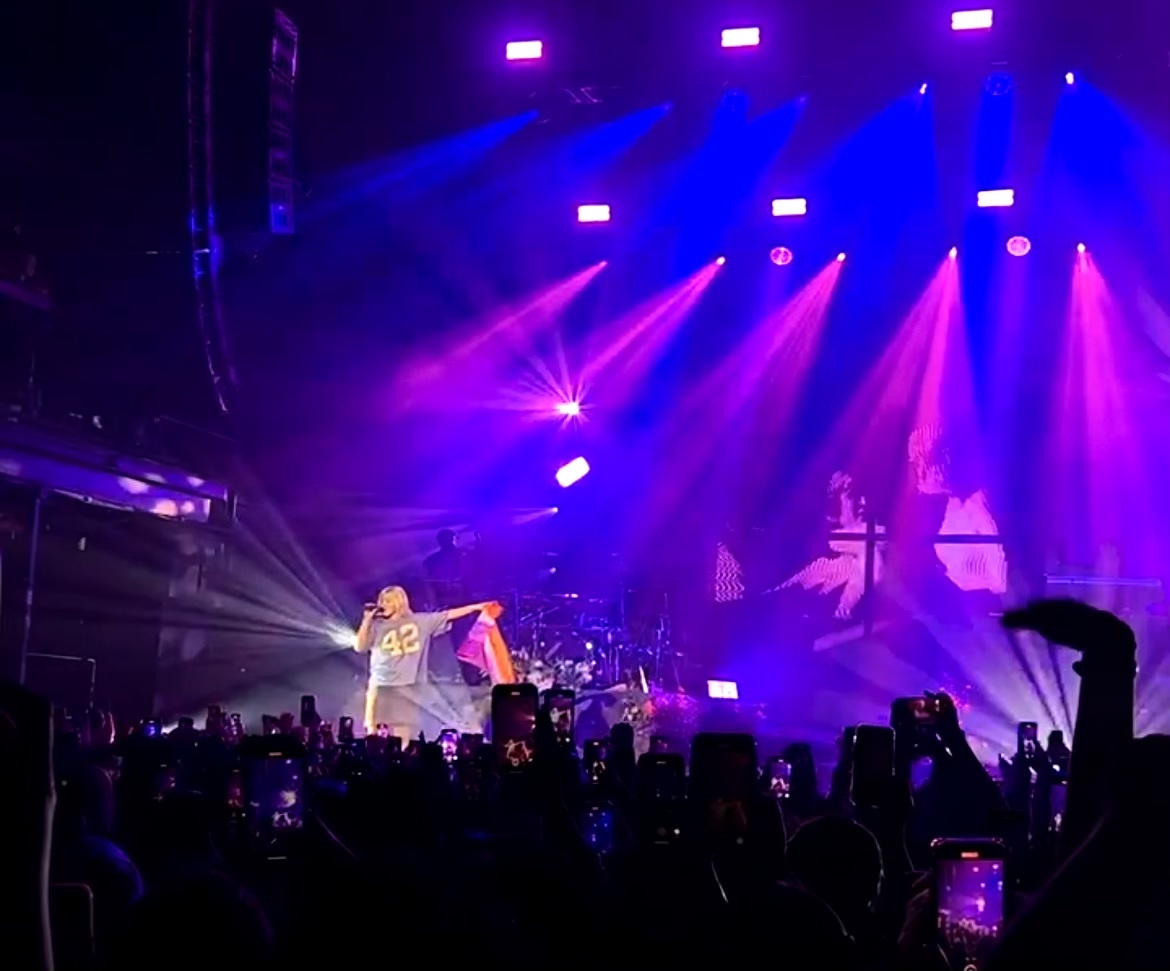Following Halloween weekend, Barnard students’ Instagram feeds were flooded with videos of a platinum blonde singer dancing around a stage, proudly waving a lesbian flag. With a string of shows around Manhattan and Brooklyn in late-October and early-November, singer Reneé Rapp captured the attention (and hearts) of young people in droves. From a wildly popular tour across the United States and Europe to a coveted spot as musical host on Saturday Night Live, it seems increasingly clear that Rapp is well on her way to global pop stardom. However, this infatuation extends beyond Rapp alone.
“I definitely feel that people feel more empowered than ever to express themselves with their music,” says Elaje Lopez (CC ‘24).
Music by the likes of Victoria Monet, Janelle Monáe, Ashnikko, and Fletcher are frequently streamed across Barnard’s campus. With other popular examples like Chappell Roan performing in arenas as Olivia Rodrigo’s opener and superband ‘boygenius’ selling out Madison Square Garden alongside MUNA, it seems that the mainstream rise of queer music does not seem to be slowing down any time soon.
The history of Grammy winners paints a clear picture that queerness was not always celebrated in mainstream music. With Elton John’s 1996 win as an extraordinary exception, it took until the 2010s for openly queer artists to finally begin winning major awards. And it is only more recently that the show has become more saturated with queer artists like Lil Nas X, Billie Eilish, and Kim Petras. So what happened between then and now?
The past few decades have seen powerful strides towards challenging traditionally heteronormative narratives and promoting inclusivity—on both the grassroots level and mainstream advocacy efforts. These efforts have opened up representation among media at large. Social media has played a powerful role in this, too.
“[Queer artists] gain a following before they ever sign a record deal… and the algorithm helps them out tremendously to connect with people,” says student director of music marketing at Relevant Youth Casey Claros in an interview with Vox. “Based off of that, they can show that they’re profitable to a label, and a label cannot ignore these artists.”
Chappell Roan is emblematic of this evolving landscape. Born in a small town in the Midwest, she first gained recognition through her YouTube covers. This small-scale fame transitioned into being signed to Atlantic Records, where she wrote her first single “Pink Pony Club”—a power-ballad on her experience of finding community in her queerness. Now, under a new label, she has a full-length album titled “The Rise and Fall of a Midwest Princess,” brimming with campy, queer pop hits that have been streamed millions of times.
However, the emergence of independent platforms and streaming services has provided many smaller artists with unprecedented opportunities to find their footing, and their community, without necessarily depending solely on traditional record labels. A notable example is girl in red––a Norwegian, lesbian singer hailed a ‘queer icon’ by many. She independently produced and released her first two EPs, both of which garnered millions of streams. Now, her music has transcended beyond the queer community alone, with Spotify placing it in universally streamed playlists like “teen beats,” “Lorem,” and “Pop Rising.”
“I think that music is storytelling and storytelling is a really radical way of establishing your narrative and kind of breaking down ideas of what’s dominant and what’s marginal,” says Lila Chafe (BC ‘24).
This promising wave of queer representation in the music industry comes during a troubling trend toward anti-LGBTQ+ legislation. According to GLAAD, a non-profit LGBTQ+ advocacy group, the past three years have been deemed record-breaking for proposed or passed legislation negatively targeting queer people. While many of these bills fail to materialize into laws, the lingering uncertainty surrounding queer rights and culture remains palpable. Proposed bills include those that threaten drag performances, transgender participation in sports, and access gender-affirming healthcare.
It’s possible, in fact, that the surge in this harmful legislation has played a role in pushing queer music into the mainstream spotlight. Amidst a rapidly changing social and political landscape, queer music stands as a poignant reflection of progress made and the ongoing need for resistance.
“For queer people, it can be life-saving to look around and see each other, raised in schools and households where we may have been denied knowledge of our own existence,” shares Grammy-winner Phoebe Bridgers in an article with them.
Bridgers’ words echo a truth seen in many queer artists’ journey to the mainstage—music not only serves as a career but as a “life-saving” recognition of queer “existence.”
“I think when you have queer media that just expresses a range of emotions and experiences, it’s very validating and really normalizes the identity, too, in a way that helps you also feel like you are normal for having these experiences,” says Lopez. “It’s important not just to be like, ‘Oh, I feel represented,’ but also to just feel normal.”
As witnessed through queer artists, new and old alike, music stands as a reminder of community, connection, and perseverance. It’s no wonder mainstream pop culture is starting to take a liking to it. Amidst a tumultuous political landscape and increasing social tension, queer music offers a breath of fresh air.

